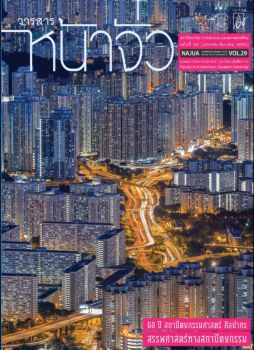Re-constructing the Vernacular? The search for contemporary vernacular houses in central Thailand
Keywords:
Traditional Architecture, Transformation, Re-constructing the Vernacular, Adaptation, PrototypeAbstract
The paper focuses on the vernacular house program launched by the National Housing Authority of Thailand. While Bangkok has become a well known metropolis with various types of urban housing for its ten million populations, majority of the Thais live in rural areas. Twenty years ago traditional Thai houses as well as vernacular dwellings are familiar sight once we travel out of Bangkok. But as the world has been transformed by technology and globalization in the past few decades, rural dwellings of Thailand have also been transformed. Vernacular dwellings particular to each Ethnic groups have become much harder to find. Rapid communication network has introduced images and things once unobtainable and unfamiliar; the “picture” of ideal house has thus been changed. Much of the rural population would like to own something “new” and “similar” to everyone else, resulting in houses of stylistic similarities that answer to neither local needs nor topographical conditions.
In an attempt to re-construct vernacular dwellings that work with current technology, materials and demands, the National Housing Authority of Thailand has launched a research project, in conjunction with Silpakorn University, that aims to re-introduce and re-familiarize people with the old concept of vernacular dwelling, which represent socio-cultural specificities of each and every Ethnic group. Starting from historic researches and a field survey of current dwellings, the research continues with an open architectural competition and concludes with designs of various prototypes that can be adapted to specific needs. Its goal is to find a new vision that answers to current demands while maintains certain characters as well as specific ways of life for each and every region.
But such design, while aims for the better, is also a paradox. While the old dwellings were born out dwelling instincts and often without architects, the new is offered by designers whose visions may or may not represent the real vernacular lives. This paper thus focuses on both the strengths and weaknesses of these new prototypes, which is a part of an attempt to answer the question: Is it possible to re-construct the vernacular?





